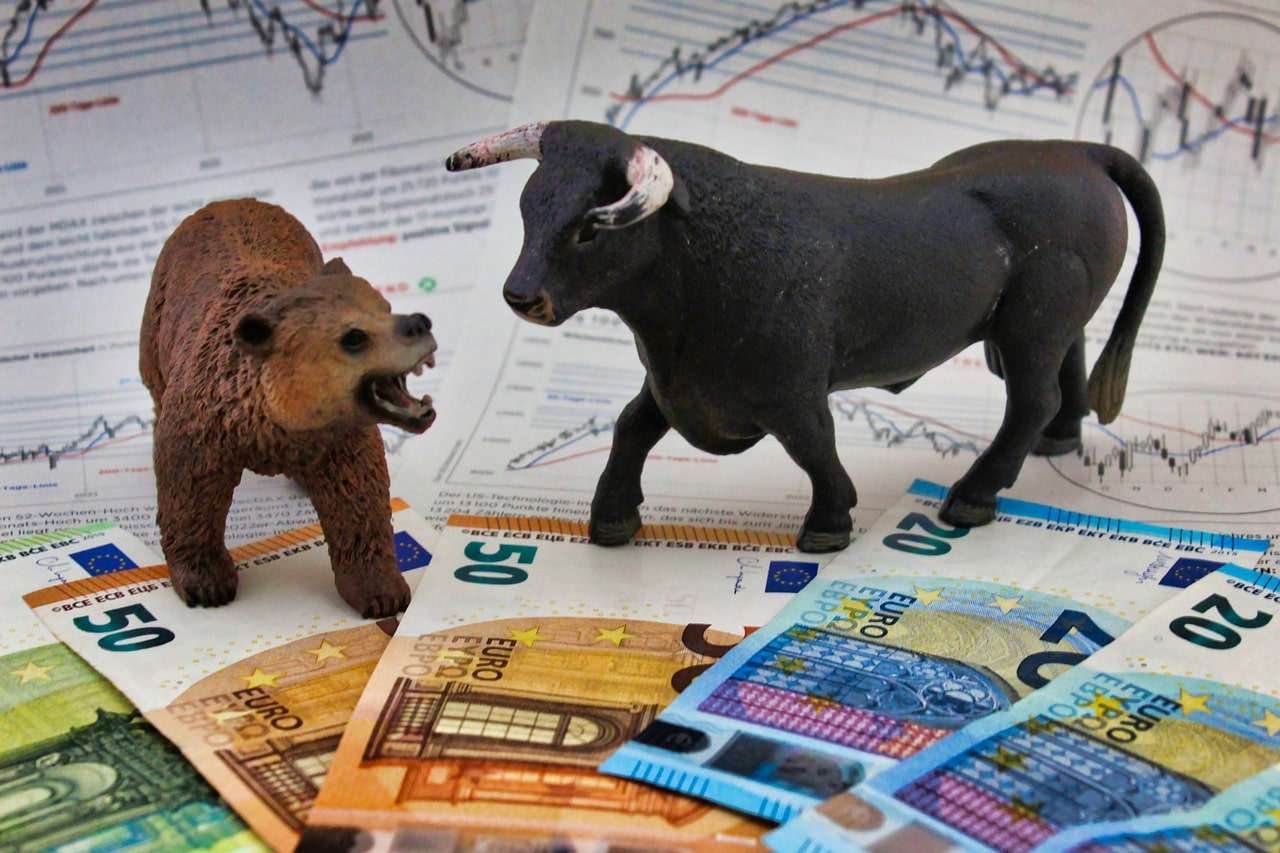In financial news, you often hear about bulls and bears, but what is a bull market and bear market? In this article, we break it down for you in a simple way. First we explain the definitions of a bull market and a bear market, and then we dive into the way the financial markets transition from one to the other. We hope this article gives you new insights that help you in reaching your financial goals, like achieving FIRE.
Contents
What Is A Bull Market?
Imagine a bull charging forward with unstoppable force—that’s the spirit of a bull market. In the financial world, a bull market is characterized by optimism, rising stock prices, and an overall positive outlook on the economy. Investors are feeling confident, and everyone seems to be making money. It’s like the financial party that never wants to end.
Transitioning smoothly into a bull market, you’ll notice:
- Upward Momentum: Stock prices are climbing steadily. It’s like watching your favorite sports team on a winning streak—exciting and full of anticipation.
- High Investor Confidence: People are throwing money into the market with a grin on their face. The prevailing sentiment is, “Why not? Everything is going up!”
- Economic Growth: Bull markets are often associated with periods of economic expansion. Businesses are thriving, and the future looks promising.
- Job Growth: Unemployment rates drop as companies hire more people to meet the increasing demand for goods and services.
During a bull market, even the most risk-averse investors might find themselves feeling a bit adventurous. The idea is to buy low, ride the wave, and sell high—classic investment wisdom. The sentiment is that everything keeps going up, up, up. Unfortunately, every bull market eventually comes to an end, leading us into…
▼ Ad
What Is A Bear Market?
Now, let’s flip the script and enter the world of the bear market. Picture a bear hibernating—slow, lethargic, and not in the mood for any financial shenanigans. In a bear market, the mood is gloomy, and the outlook is pessimistic.
Easing into a bear market, you’ll observe:
- Downward Spiral: Stock prices are dropping, and investors are watching their portfolios shrink. It’s like a roller coaster ride, plunging downwards, but without the fun.
- Low Investor Confidence: Fear and uncertainty grip the market. Investors are cautious, and many are looking for ways to minimize losses. This risk-aversion can impact certain sectors more than others, as the more speculative parts of the market are suddenly a lot less enticing.
- Economic Contraction: Bear markets often coincide with economic downturns. Businesses may struggle, and the overall economic activity slows down.
- Job Losses: Unfortunately, job cuts may become prevalent as companies try to navigate the tough times. People are fired because the demand for their products, and thus their revenue, is going down.
In a bear market, the prevailing wisdom is to tread carefully. Investors might consider defensive stocks, bonds, or other assets that historically weather economic storms better.

The Market Dance: Bull to Bear and Back Again
Now, you might be wondering, “How does the market transition from a bull to a bear, and vice versa?” Well, it’s a dance as old as time, influenced by a myriad of factors.
Transitions between bull and bear markets often involve:
- Economic Indicators: Key economic indicators, such as GDP growth, inflation rates, and employment figures, play a crucial role. Positive indicators can usher in a bull market, while negative ones might signal the onset of a bear market.
- Interest Rates: Central banks and their policies on interest rates can impact market trends. Lower interest rates might fuel a bull market, while higher rates could contribute to a bearish sentiment.
- Corporate Earnings: The financial health of companies is a significant driver. Strong corporate earnings generally support a bull market, while declining earnings can trigger a bearish trend.
- Geopolitical Events: Wars, political instability, or global economic events can cause sudden shifts in market sentiment.
Remember, the market is like a living, breathing organism, influenced by a multitude of factors that can change in the blink of an eye.
▼ Ad
Navigating the Waves
So, how do you navigate these market waves without getting seasick? Well, the key is to stay informed, diversify your investments, and, most importantly, keep a level head. This is incredibly important if you want to use investments to improve your personal finances.
- Stay Informed: Regularly check the financial news, keep an eye on economic indicators, and be aware of any geopolitical events that might impact the market. And remember why it is important to invest your money.
- Diversify Your Portfolio: Don’t put all your eggs in one basket. Diversifying your investments across different asset classes can help mitigate risks.
- Long-Term Perspective: Remember that the market goes through cycles. What goes down will likely come up again if you’ve invested in decent companies. Adopting a long-term perspective can help you weather short-term storms.
- Seek Professional Advice: If the financial world feels like uncharted territory, consider seeking advice from a financial advisor. They can help tailor a strategy that aligns with your financial goals and risk tolerance.
Conclusion: What Is A Bull Market And Bear Market?
In conclusion, a bull market is a market where there’s upward momentum, while a bear market is a downward spiral. Moreover, the financial market is a dynamic playground where bulls and bears engage in a perpetual dance. Understanding the ebb and flow of these market trends can empower you to make informed decisions about your investments. So ride the waves of the market with confidence!




